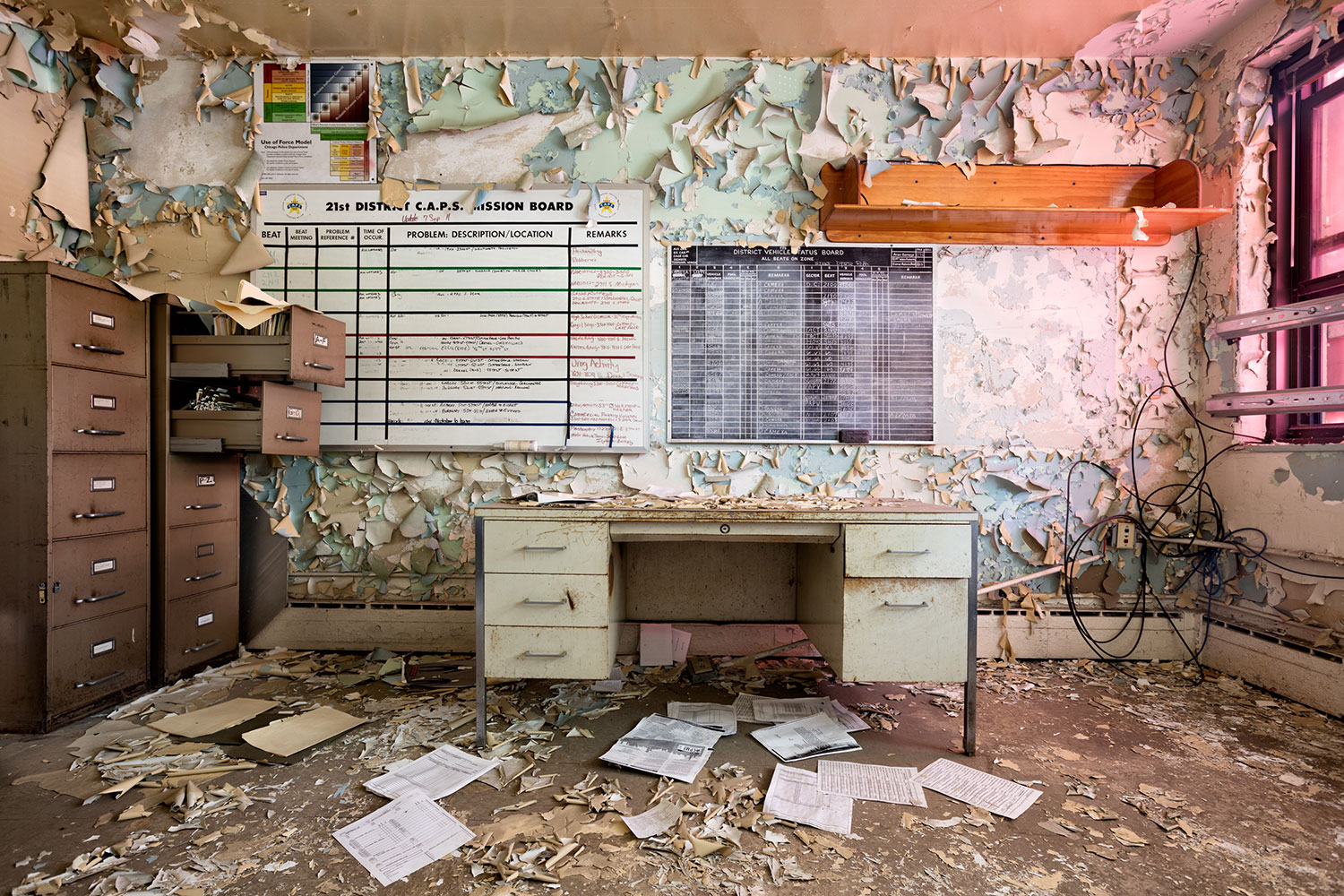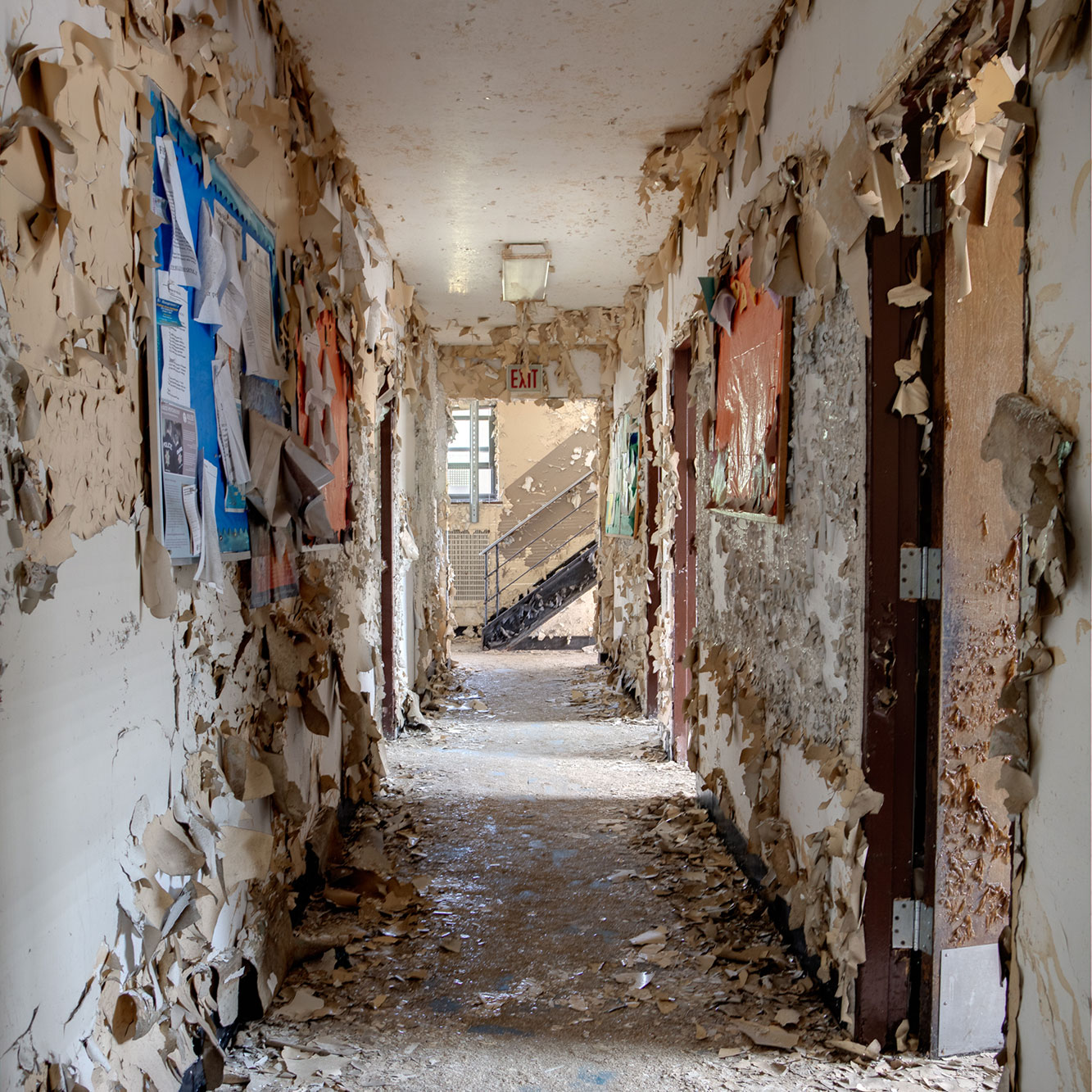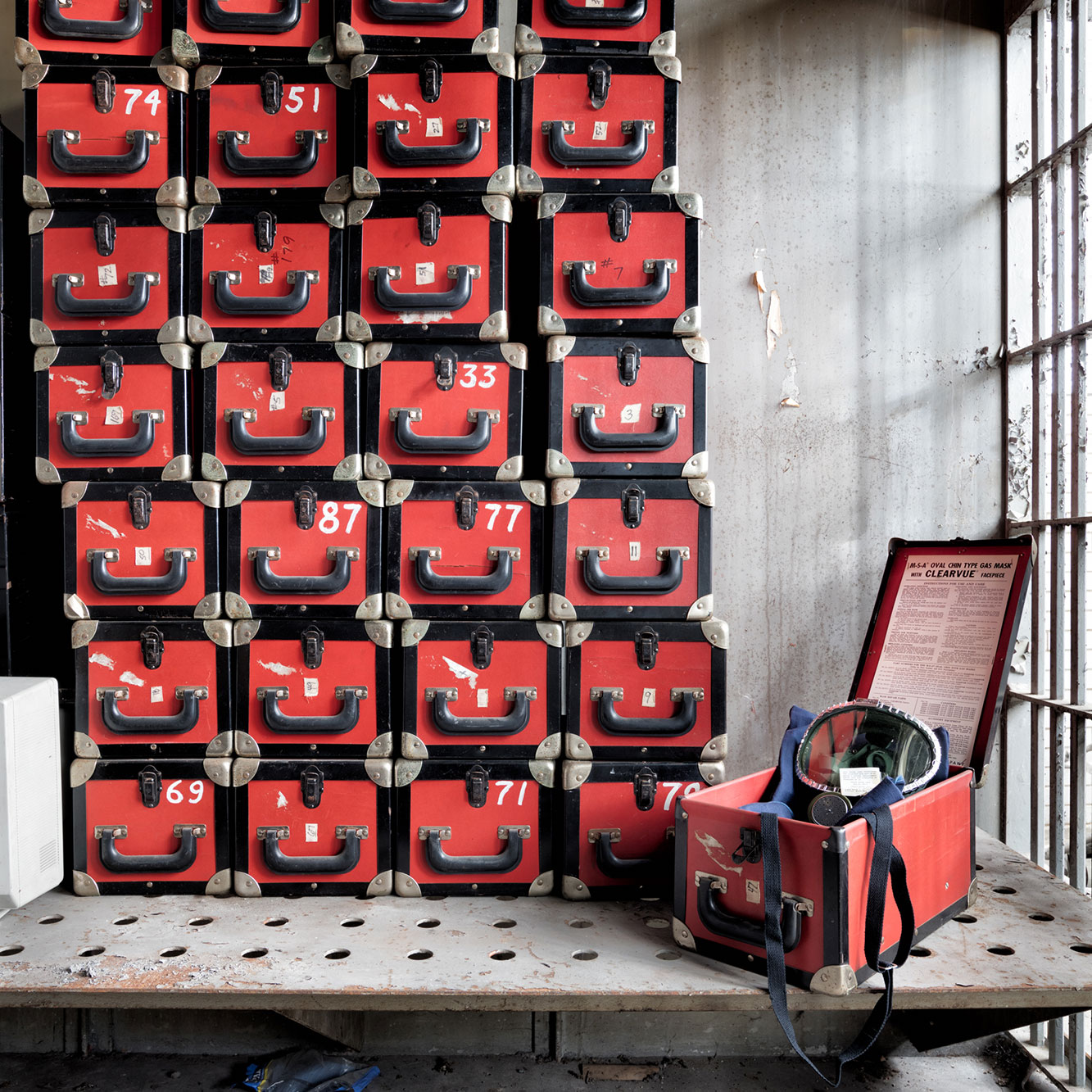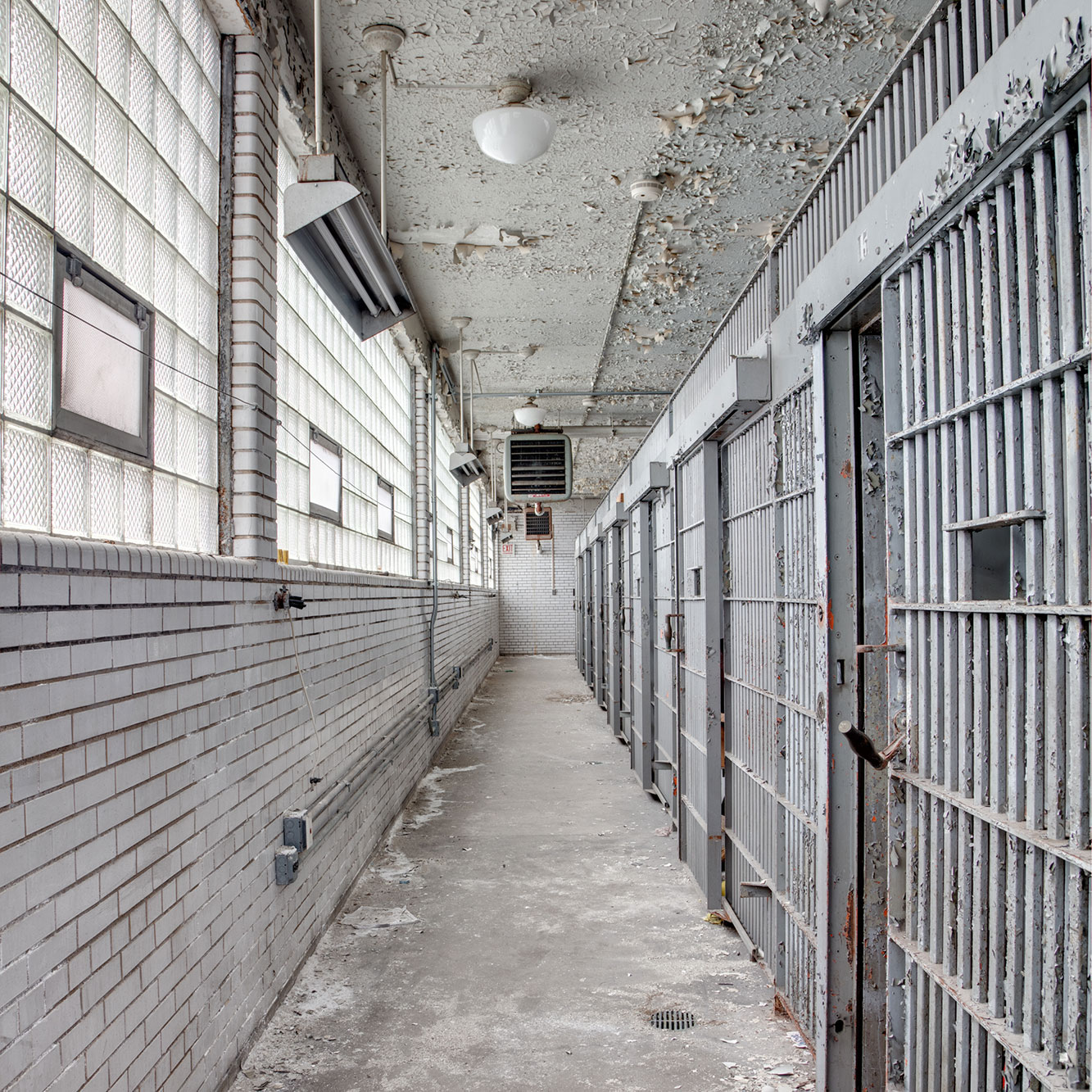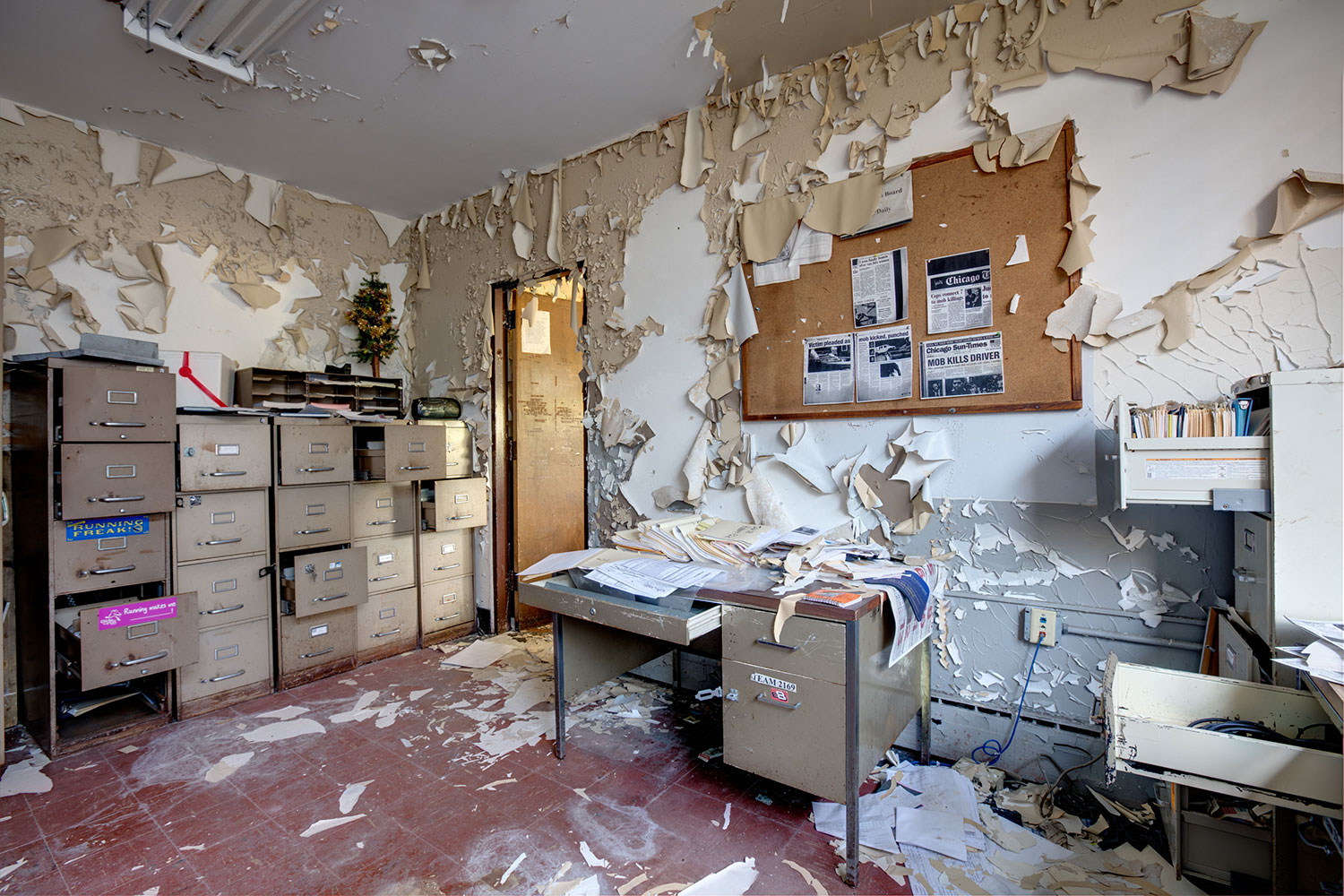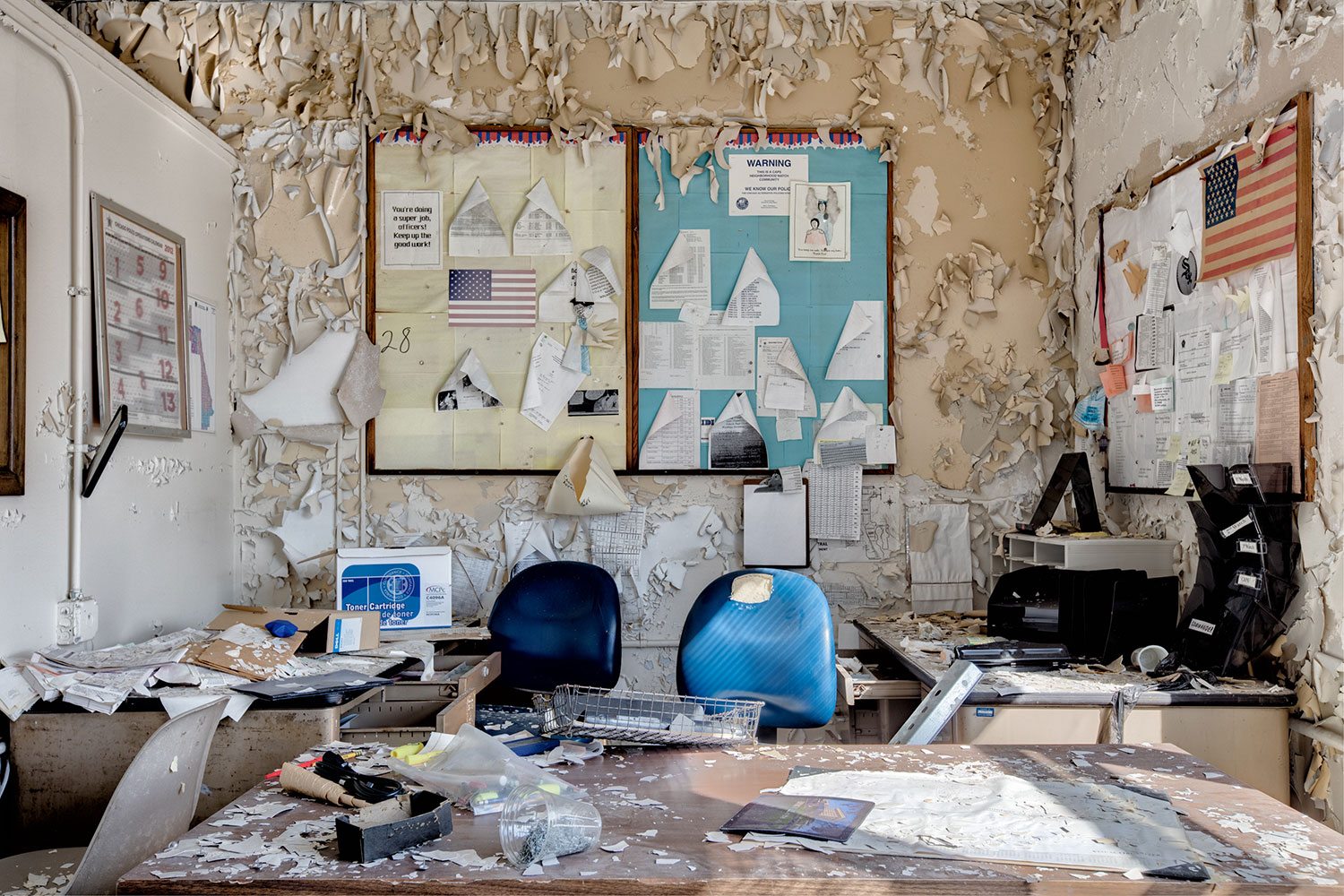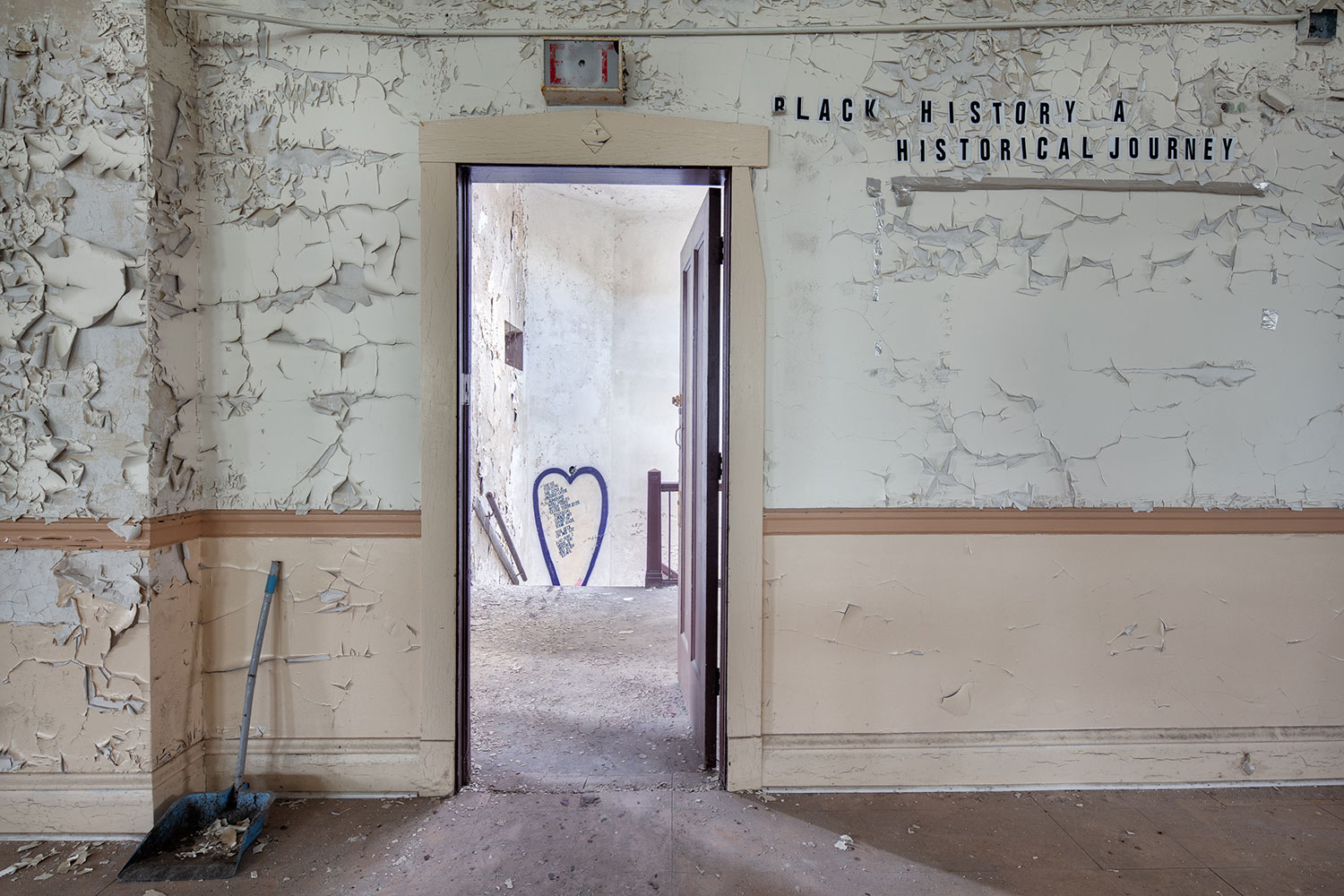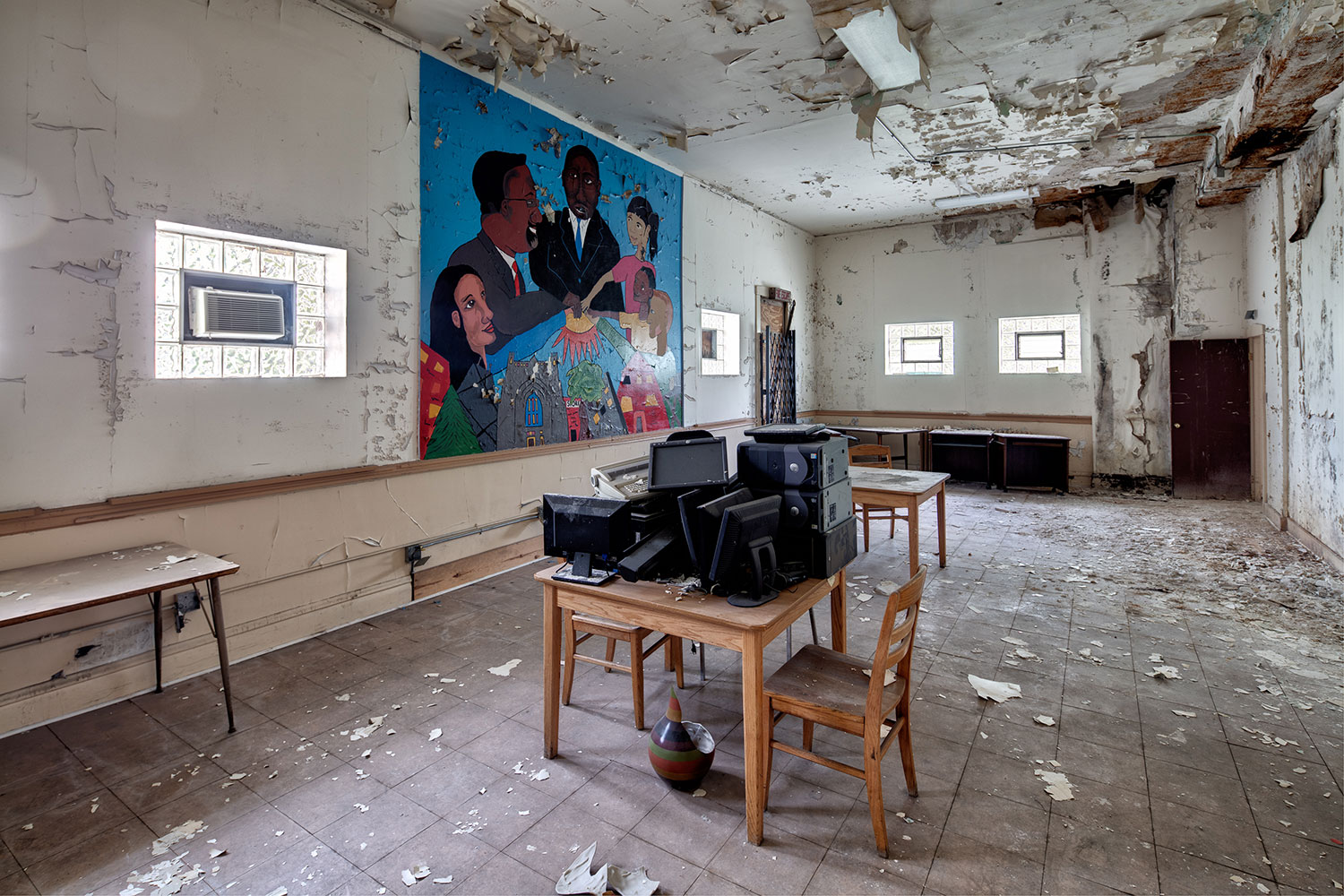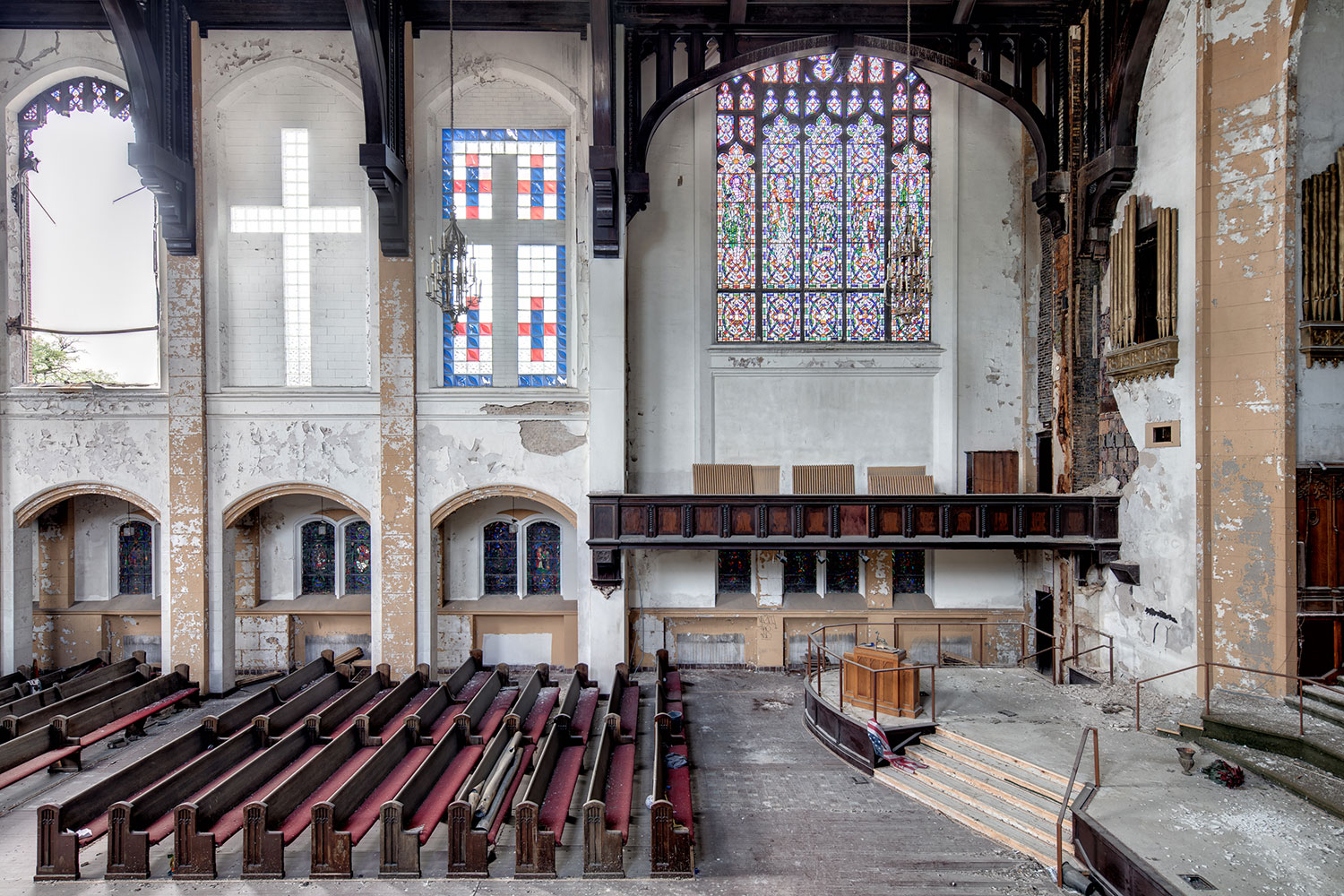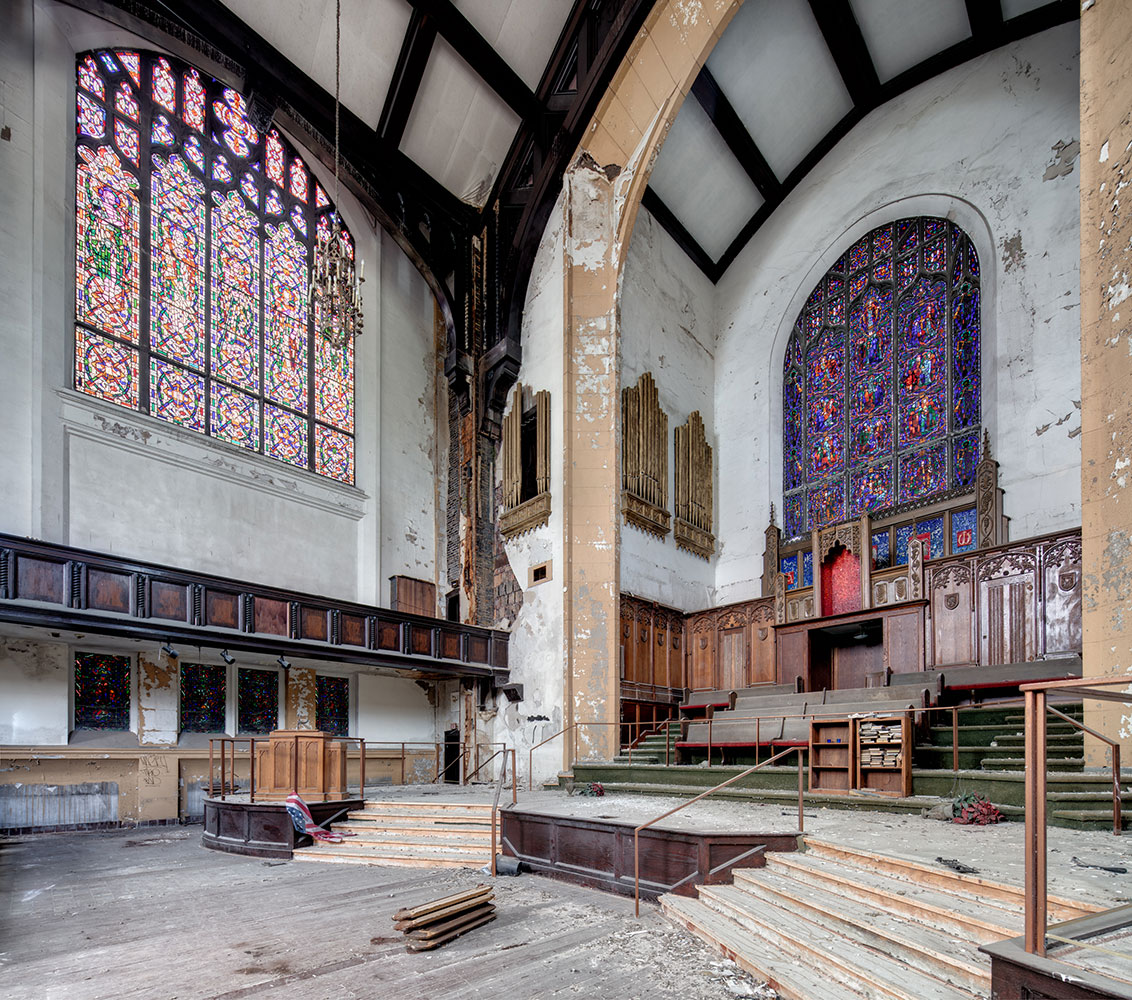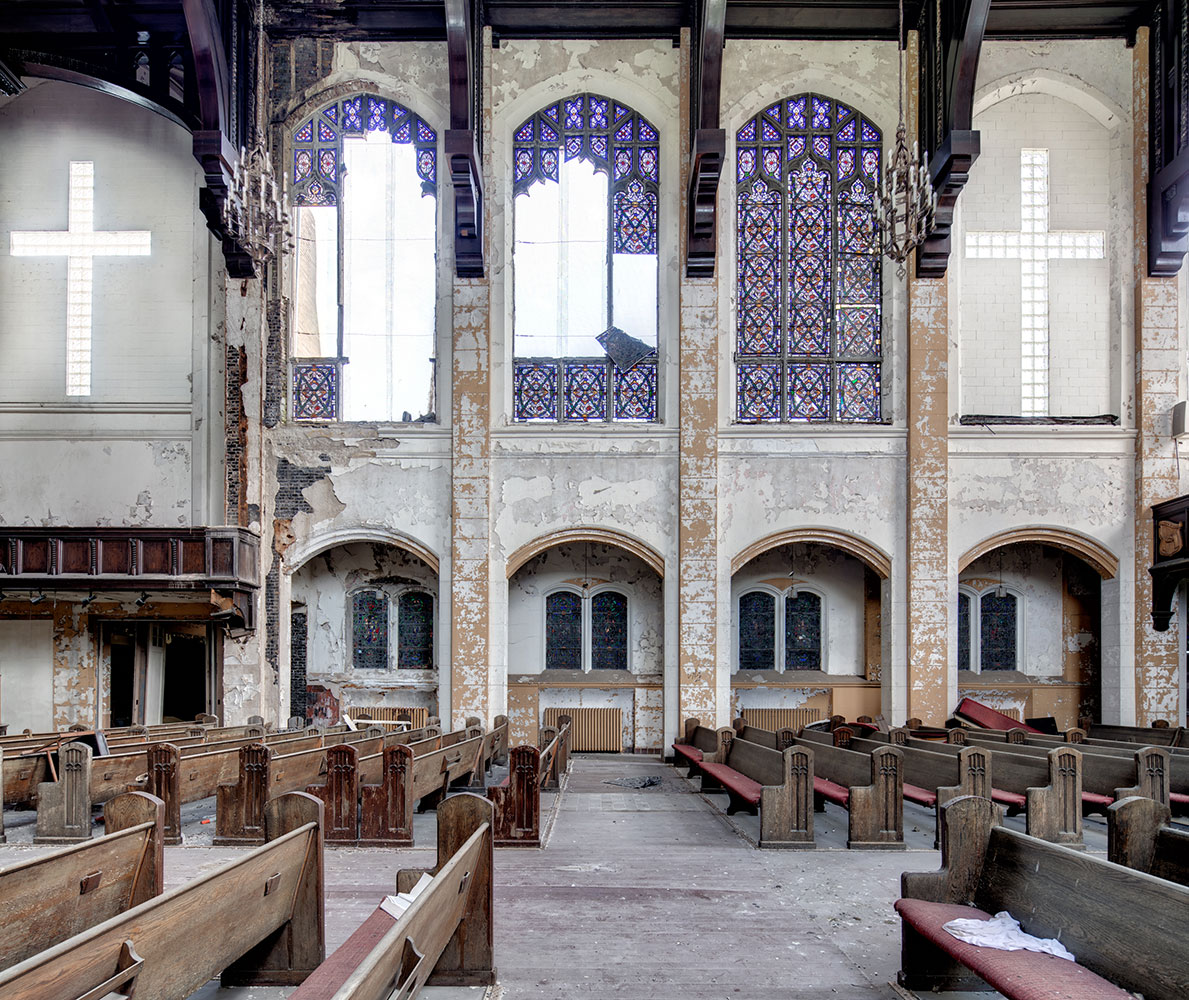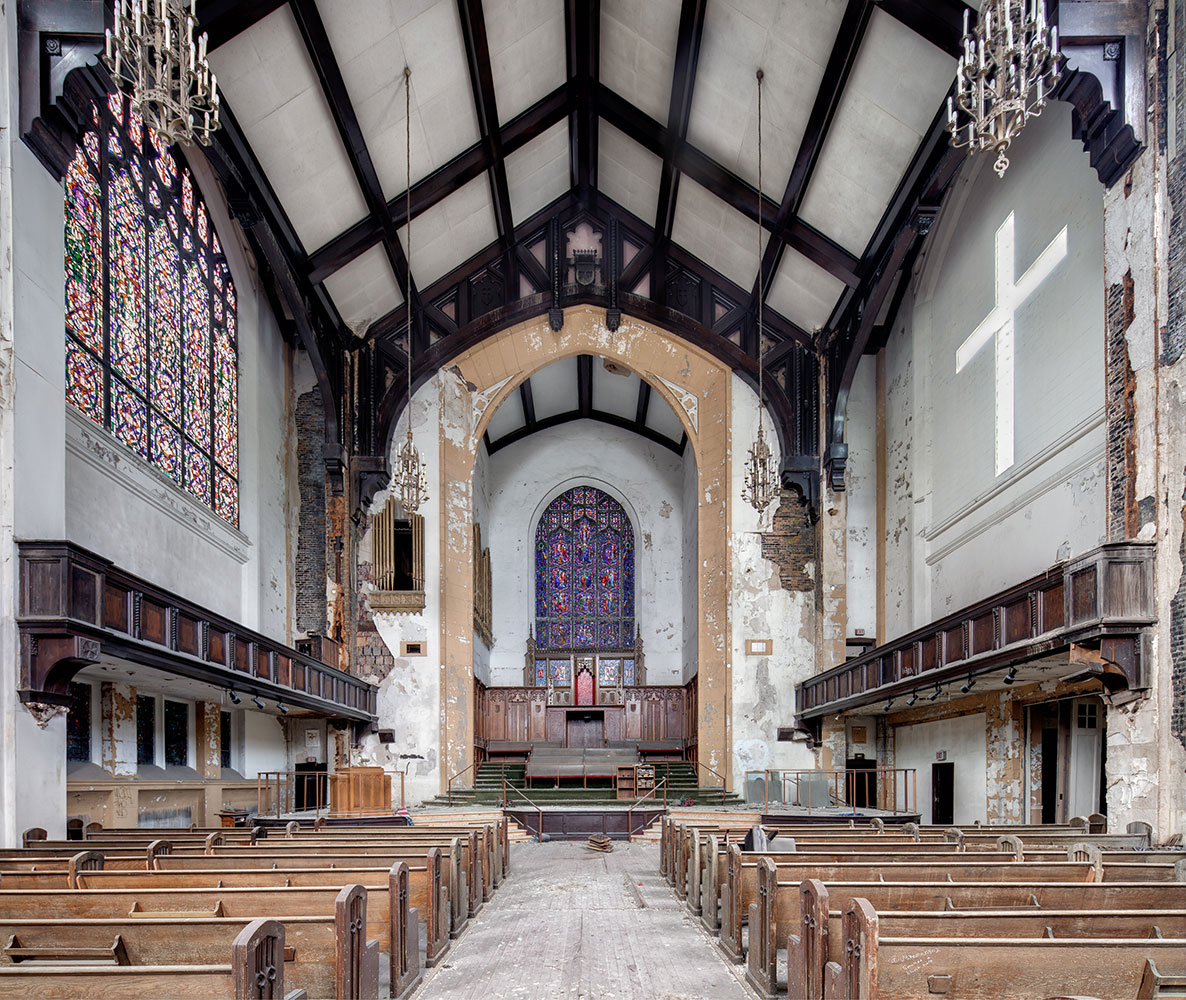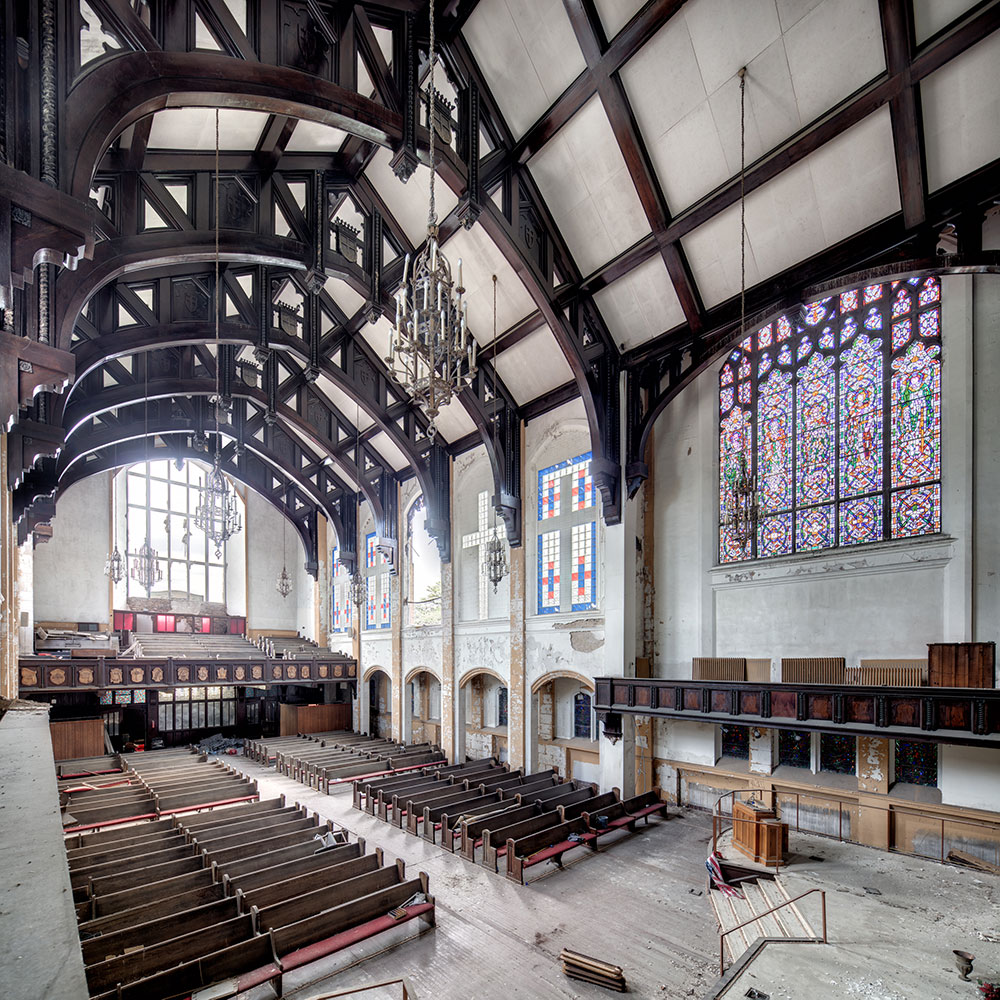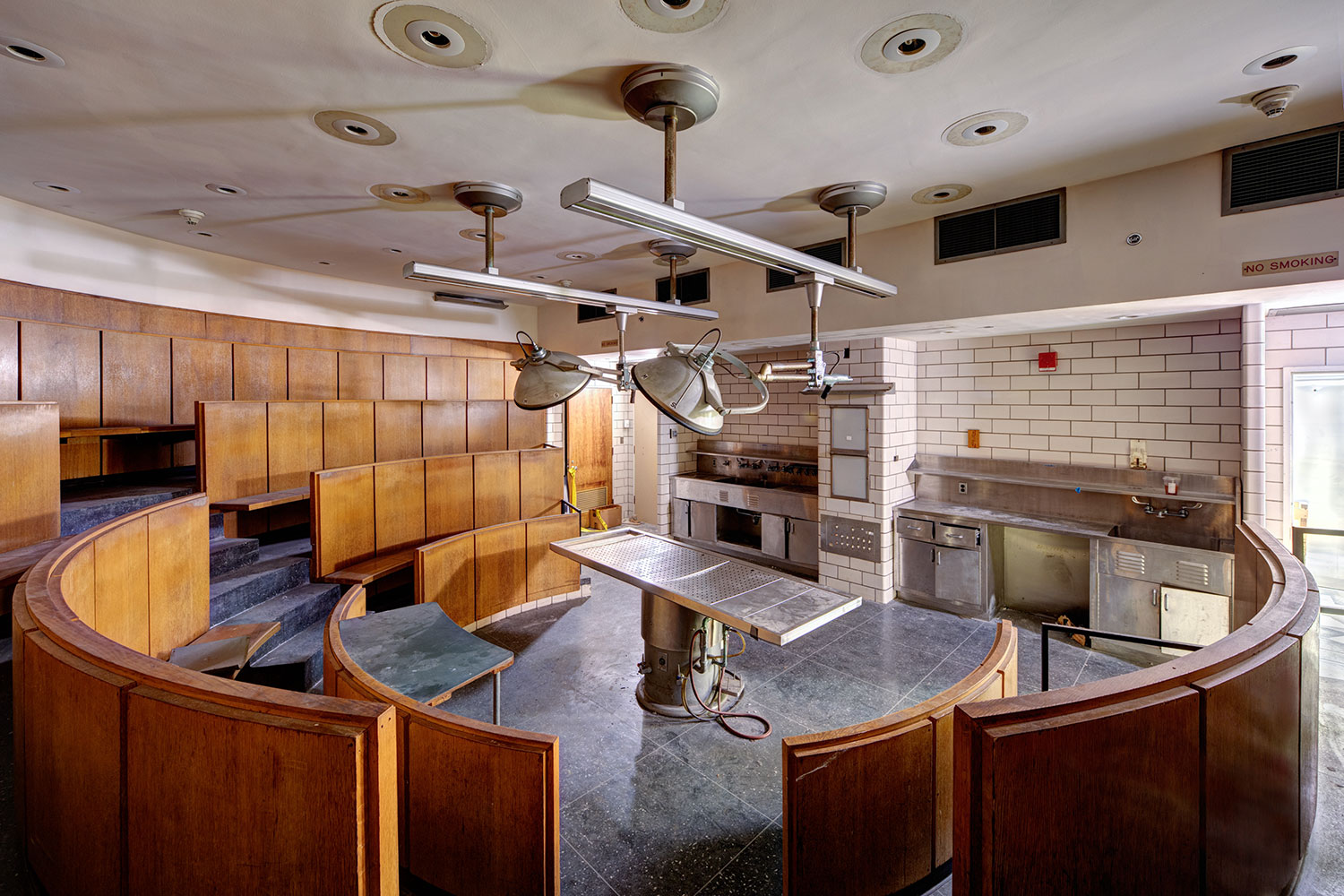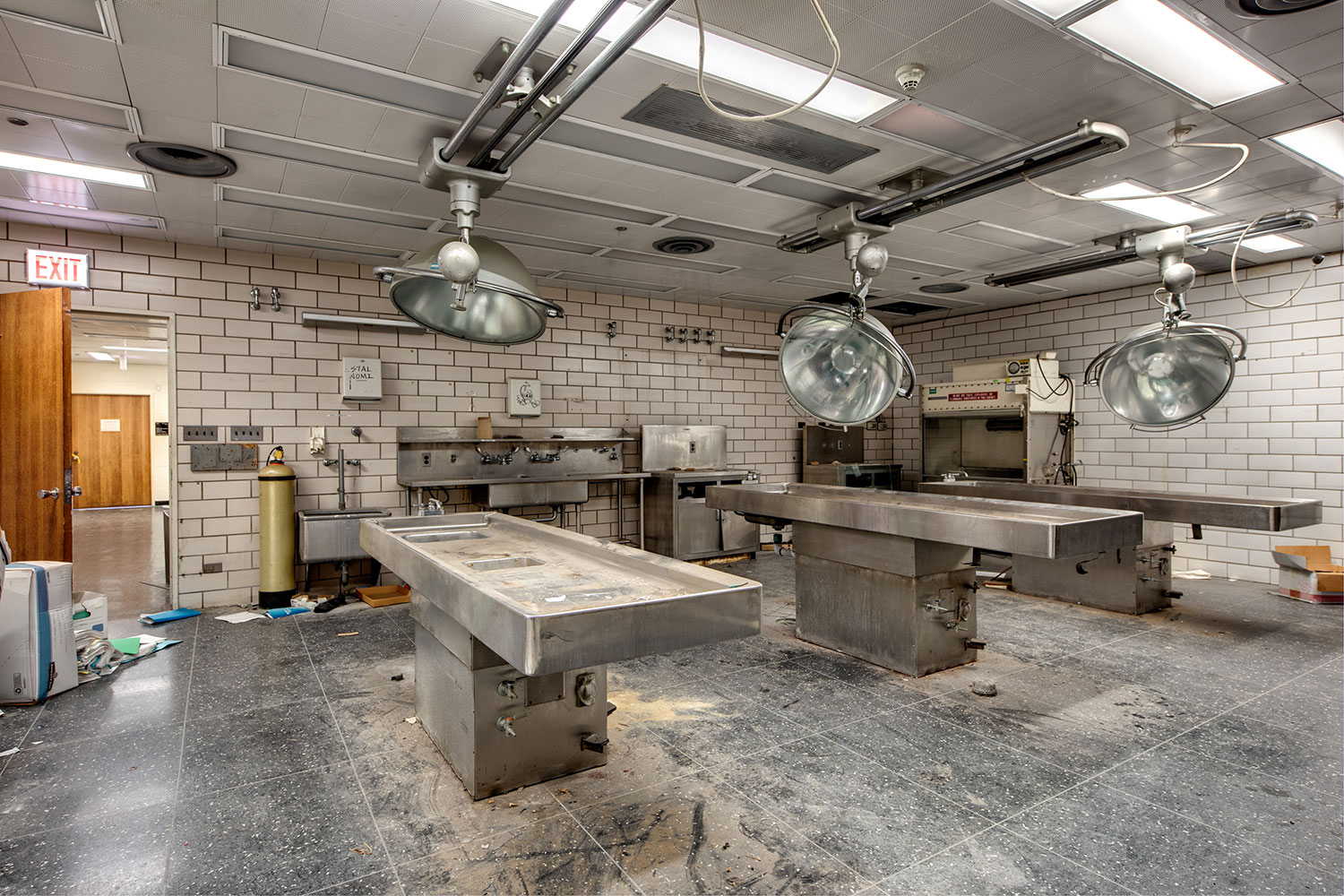On Sunday morning, while all of youse are sleeping in, brunching, going to church, or swearing at Meet the Press, Eric Holubow is sneaking into abandoned buildings. Holubow’s hobby is Urban Exploration — UrbEx for short — which involves penetrating and photographing long-empty churches, hospitals, schools, and factories. UrbEx is best practiced in the older cities of the East and the Midwest, which are lousy with ruins.
Sunday mornings are prime UrbEx time, because anyone who might call security or the cops is engaged in one of the aforementioned activities. It’s a hazard of the hobby. Holubow has been escorted out of the old Cook County Hospital by private security, and ticketed for trespassing at a psychiatric hospital in Michigan.
This Sunday, Holubow’s first target is the hematology lab at the old Cook County Hospital’s Division of Nephrology. He thinks he knows a way in. Holubow walks down a path covered with dead leaves, climbs a metal railing, and yanks on a door.
“Oh, shit, they locked it,” he grumbles. “It was open a long time ago.”
Holubow glances down at a plank covering a window.
“That’s a fresh board,” he observes. “That’s another way in. That’s the game with the community. This is a known site. It’s pretty desirable. There’s a circular auditorium, and those tables you put cadavers on. Let’s go on to the next site.”
The next site is a church in Englewood: Beloved Community Christian Church, Rev. Bobby L. Rush, Pastor and Teacher. Rush, the South Side congressman, bought the old Our Redeemer Lutheran Church in 2005, and held services there for more than a dozen years before moving to a new site on 47th Street. It’s easy to get inside this one. He steps through the frame of a door whose pane was shattered long ago, walks up a stairwell whose paint is flaking off the walls, and into the sanctuary, where a pigeon flutters through an empty window. Holubow never enters a relic without his backpack, which contains a tripod and a Canon 5DSR camera. He unpacks, sets up in the balcony, which is crunchy with bird droppings, and starts shooting. He focuses on the altar, where an American flag is bunched at the base of the pulpit.
UrbEx photography is often dismissed as “ruin porn,” because, as Detroiter John Patrick Leary once wrote, it “aestheticizes poverty without inquiring of its origins, [and] dramatizes spaces but never seeks out the people that inhabit and transform them.” Holubow is aware of the criticism but believes there is a sociological lesson to be drawn from the fact that an UrbEx photographer is a church’s only Sunday visitor.
“I’m not a religious man, but I still like to go to church on Sundays,” Holubow says. “I’m Jewish. In Lawndale, there’s a bunch of old synagogues that have been converted to Baptist churches, then abandoned. It’s socioeconomics, shifting neighborhoods. When people get displaced, they don’t go to church anymore. In general, people are less religious, too. There’s been a shift in societal values in spiritual time, the way people recharge their batteries.”
Holubow photographed his first urban ruins in 2005. At the time, he was working as a design planner, and visited his company’s factory at 35th and Kedzie — across the street from the old Washburne Trade School. Holubow was more interested in the empty school than the factory. He went inside, and was “blown away by this huge, abandoned building. I came back with my camera.”
Soon, he was learning about new sites on Meetup’s Urban Photography page and posting his photos online. In 2014, he published a coffee table book, Abandoned: America’s Vanishing Landscape, with Detroit’s Packard Plant on the cover and photos of the Uptown Theatre inside. A second edition of the book is coming out in July. His urban explorations have taken him as far south as New Orleans, where he photographed a power plant and an amusement park, and as far west as Seattle, where he sneaked into breweries and a nuclear power plant.
“It truly is exploration,” he says. “You’re discovering stuff. Seeing how decay happens and detritus, how that unfolds is fantastic. I think there’s beauty here. The beauty of decay is taking one man’s organized vision and introducing entropy: nature bats last. Seeing something highly organized become disorganized, highly integrated become disintegrated.”
That is certainly the state of Holubow’s next stop, the old 21st District police station at 29th and Prairie, in the Douglas neighborhood. Law enforcement is all about order, but the police abandoned this outpost to disorder a decade ago and didn’t even bother to lock the door behind them. Holubow walks right in, to what appears to be an example of French Leave: wanted posters of gangbangers are still pinned to a billboard, the barred doors to the holding cells are wide open, the C.A.P.S. mission board lists the ten-year-old offenses of narcotics, panhandling, and commercial parking violations. A 2012 calendar on the floor indicates the last day on the beat here.
Next, Holubow tries to get into Henson Elementary School, at 13th and Avers, in North Lawndale. When Mayor Rahm Emanuel closed 50 Chicago public schools in 2013, he created 50 urban exploration sites.
“Chicago has a lot of schools,” says Holubow. “The schools on the North Side get to be reused, as condos, but the schools in Lawndale, they’re not doing shit with.”
Holubow has been inside Henson before, but as he cases the building, he discovers that all his old entry points have been boarded up. This, he says, is a consequence of urban exploration’s popularity and publicity. Like many explorers, Holubow posts his photos on Instagram, at @eholubow, and on his website, ebow.org. Property managers see them and respond by securing their buildings. It’s making the game more difficult.
“Before, it was something they couldn’t wrap their heads around,” he says. “Because of Instagram, they see kids getting into these places. It’s 100 percent more difficult. They’re much more reactive now. Technology has enabled caretakers. They have motion detectors; they don’t have to be there, but they can keep an eye on it.”
After a few suspicious neighbors ask why the hell he wants to get inside that old school, Holubow decides to give up. He’s been on explorations when neighbors called the cops, who arrested photographers. Holubow decides to take one more crack at the Division of Nephrology. He calls a fellow explorer who tells him there’s an open door in an adjacent building. Holubow finds it, climbs five flights of stairs, crosses a skywalk, and descends into the Anesthesiology Research Department. It’s exactly as he described it: there’s a surgical auditorium, where three banks of wooden bleachers surround an operating table, and an autopsy room, with three stainless steel tables for dissecting cadavers. Desks are strewn with floppy disks, moving boxes full of files sag on the floor; in a 1978 letter taped to a wall, the clinic’s director complains about a clerk’s work. Like the police station, this institution was abruptly deserted. In the early years of its abandonment, it may have seemed suspended, like a museum diorama, but has now decayed too much to ever be reinhabited. It’s still at that point between the designs of humanity and the reconquest of nature, that space all urban explorers seek out.



